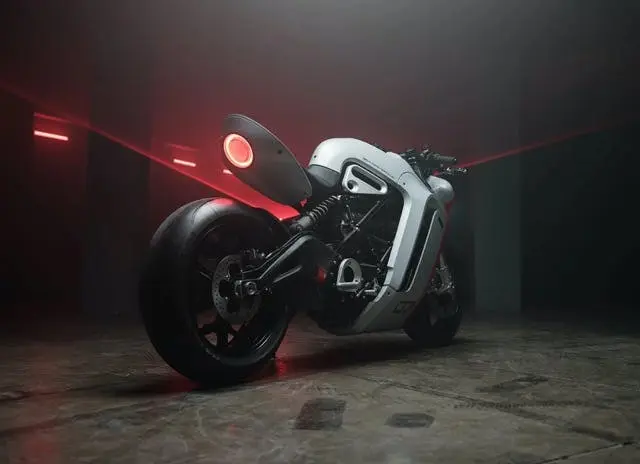Mini Cooper Super-Powered by Zero Motorcycles
Abe Askenazi
CTO at Zero Motorcycles
May 14, 2024
Abe’s Z-Force Mini
A few years ago, Micah Bayless (Director of Powertrain Applications Engineering at Zero Motorcycles) started pushing me to come up with a personal e-conversion project using Zero Motorcycles' leading electric powertrain technology. Naturally, this was to be expected from Micah, who seamlessly incorporated our powertrain into various personal projects, ranging from a 1946 Gibson tractor to a race-ready 1973 Porsche 911 that secured a podium finish in the 2010 Pikes Peak e-class. I haven't had the chance to drive the Porsche, but the crazy-powered tractor is an absolute blast.
Faced with Micah's relentless pressure, I let him know I'd always dreamed of owning a classic Mini Cooper, which I had unsatisfactorily fulfilled through owning a couple of the new Minis. By sheer luck and perhaps some determination, Micah stumbled upon a 1966 Mini being sold in San Diego by a racer who had blown its engine, making it an ideal candidate for an electric conversion! As fate would have it, Micah was going to be trailering his Porsche to Southern California and could easily trailer the Mini back. I'll never understand how he made all of this happen, but the next thing I knew, I was all in!


Since the start of this project, I decided my approach would be a bit different. Most of our employees who embark on personal projects with Zero Motorcycles' powertrain want to stretch the limits of our capabilities and thus end up with "Frankenstein" integrations that are quite different from those on our motorcycles. To immerse my hands and brain in the detailed implementation of our "production" technology, I decided I would take the powertrain found in our SR/F and SR/S models and transplant it to the Mini with the fewest possible modifications.
To make this happen, I bought a used 2020 Zero SR/S as the unwitting donor.
I then stripped away all remaining internal combustion content (including its original electrical system) from the Mini. When complete, I wanted the Zero Motorcycles powertrain to be unaware it was driving a Mini vs. its original donor motorcycle.

What followed, and what proved to be the most challenging, was figuring out how to drive the FWD Mini. The original classic Mini cleverly and efficiently integrated the transmission and differential into the engine (amazing tech developed in the '50s!), so when the engine is out all you have left are the front CV joints.
Brainstorming with Micah and Ryan Biffard, Zero Motorcycles' Powertrain Technical Specialist, we arrived at using a front differential from a BMW X5 and a set of sprockets with a belt to achieve an overall speed reduction ratio of 5.0 for an estimated 0-60mph of 5.0sec(!) and a top speed of 75mph. Plenty fast for a classic Mini!
The sprockets, belt, and accelerator pedal would come straight out of the Ranger Kinetic we were developing with Polaris, allowing me to test additional Zero Motorcycles content for a production vehicle.



Next came an intense game of Tetris – these cars were called Minis for a reason! My target was to fit the entire Zero SR/S powertrain (minus the charger) in the front engine compartment and the charger in the boot (where the original Mini fuel tank went) to keep weight distribution similar to the vehicle’s original design.
I enlisted Calfee Designs to help me figure this out, and with the use of cardboard mock-ups, we arrived at an extremely tight but working solution. We then installed the real powertrain and spent the next few weeks finalising its integration.
I also want to thank Will Brunner, Zero Motorcycles’ vehicle control unit guru, and Josh Roton, Zero Motorcycles’ R&D Fabrication Engineer, for helping make this magic happen.


So, how’s this a “motorcycle powertrain that doesn’t know it’s powering a Mini”, you ask? Beyond the High-Voltage traction system, Zero Motorcycles’ 12V system powers everything “low voltage” in the car. The only bit left from the original Mini is the windshield wiper motor, as we don’t yet have one of those on our bikes.
The SR/S dash is the Mini’s dash, and we mounted the bike’s switch-gear hand-controls via a fabricated “mini handlebar” to the Mini’s steering column close to the driver’s hands to operate all the car’s functions, same as you would on the SR/S.




Other than harness extensions as needed, wiring a sweet-sounding Bluetooth amp to our accessory connector, and capping unused connectors used by bike-specific components, the electrical architecture matches that of the donor Zero SR/S.
The result is a rocket ship that smokes its tires effortlessly and produces more smiles per mile than any other 4-wheel vehicle I’ve driven.
As soon as I got it running, it became an amusement park ride for my family, friends, and many of our employees, all of whom had a blast going for a thrilling ride!




Since I got it running, I’ve had to replace the differential with a RWD Miata unit, as we completely missed the fact that we would be running the FWD BMW front differential in reverse. Other than this and taking a very long time to sort out the brakes (don’t even ask), most of my time has been spent making it a more comfortable and visually appealing ride.
The SR/S powertrain has been running flawlessly, and I have become much more in tune with our technology, which is what everyone would want for Zero Motorcycles’ Chief Technology Officer. It’s been a fantastic experience in realizing my vision, teaming up with many of our employees on a fun extra-curricular project, and finally getting to drive my dream vehicle (with a ton more power and torque than I originally expected)!


I would also like to thank the following Zero Motorcycles team members for their awesome contributions: Steve Salyer, Matt Reeve, Kevin Waggoner, Kenneth Jones, Tony DeAngelis, and many others.



2024 BILTWELL 100







